| Srl | Item |
| 1 |
ID:
084232
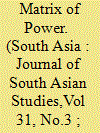

|
|
|
| 2 |
ID:
084233
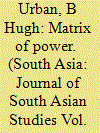

|
|
|
| 3 |
ID:
126173
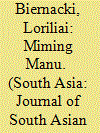

|
|
|
|
|
| Publication |
2013.
|
| Summary/Abstract |
This paper proposes an example of mimicry as an instance of intertextuality across genres, revealing a complex social response to normative, orthodox attitudes towards women through a close analysis of two very different types of male-authored religious texts from India, Tantric texts and a particularly famous law book, Manava Dharma Sastra. I argue that mimicry functions to undermine a normative stance towards women by appropriating and subverting the well-known verse from Manu's Law Book that states that women should not be permitted any independence from their male guardians. In this case, this verse is reformulated to reverse the meaning it originally had in Manu's Dharma Sastra, communicating a very different attitude towards women. This Tantric subversion of Manu suggests not only that elements of legal texts impacted on non-dominant populations through imitation and circulation in circles outside of expected Brahmanical orthodoxy, but also that textual satire via appropriation of these verses may have at times offered resistance, contesting the political assertions of a normative view.
|
|
|
|
|
|
|
|
|
|
|
|
|
|
|
|
| 4 |
ID:
177937
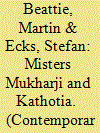

|
|
|
|
|
| Summary/Abstract |
This article reflects on the meanings of money in the lives of two very different people from Kolkata. Mr Mukharji, a 60 year-old Bengali man, was a branch manager of a state bank who devoted his life to Tantrik Yoga. Mr. Kathotia, a Marwari man, was a wholesale paper dealer, with an interest in stamp and coin collecting. After first developing a theoretical framework on the sociology of money, the authors go on to describe their encounters with these two people, their different ethnic belongings, their social and working lives and what matters to them in life.
|
|
|
|
|
|
|
|
|
|
|
|
|
|
|
|
| 5 |
ID:
180278
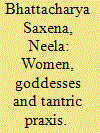

|
|
|
|
|
| Summary/Abstract |
While modern India is complex, plural and perhaps foundationally connected with its rich liberatory paths, there is reason to be concerned when a large number of people are fed hate-filled rhetoric against their own long-term neighbors. Today the virulent ideology of a purported “Hindu” rashtra is growing under governmental provocation. It needs an alternative vision which can be resurrected from India's own suppressed history. That is Tantric India, whose liberatory paths with women and goddesses is compatible with the contemporary world. India has been a magnet for “spiritual” seekers around the world because the great sages were helping to free us from our conditioned selves. This worldview, that encompassed all Indic dharmas, was developed especially by Shaiva, Shakta and Buddhist enlightened beings, and was set against an upper caste hegemony of truncated Vedism. The true masters who developed a real science of tantric praxis taught how to appreciate the world here and now without violence to the self, earth or the perceived other. From ancient yogic explorations of humanistic psycho-spiritual development that has been a hallmark of India, a profoundly egalitarian world view had developed during 8th through 12th centuries. It is time we reexamine that history and imagine a different Subcontinent.
|
|
|
|
|
|
|
|
|
|
|
|
|
|
|
|